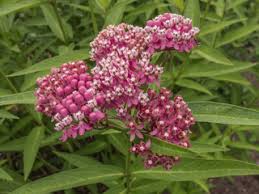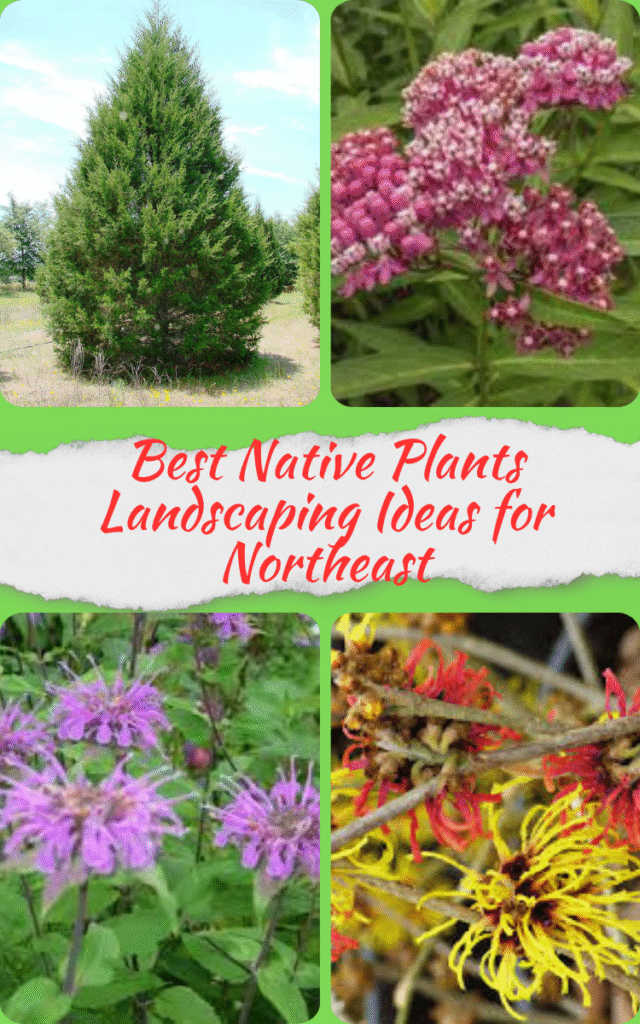
When I first started experimenting with landscaping, I quickly realized that no amount of store-bought fertilizer or irrigation could make up for planting the wrong plants in the wrong place. In the Northeast, with its shifting seasons, humid summers, and cold winters, native plants have proven to be the most reliable and rewarding choice. They aren’t just tough survivors; they also add color, texture, and wildlife support in a way that feels effortless.
Native plants know the rhythm of the land—they bloom when pollinators need them most, thrive in local soils, and ride out winter with no fuss. Instead of fighting nature, they flow with it, giving us gardeners more time to enjoy our spaces instead of constantly maintaining them.
If you’ve been thinking about refreshing your yard or garden with plants that thrive naturally, these eleven ideas highlight some of the most versatile and beautiful natives of the Northeast. Each one comes with landscaping inspiration, ecological benefits, and care tips to help you put together a space that feels vibrant and alive year-round.
1. Create a Pollinator Border with Bee Balm (Monarda didyma)

Bee Balm is one of those plants that announces itself boldly. With fiery red or deep purple blooms, it draws your attention as much as it draws hummingbirds, bees, and butterflies. Planting it along a garden border creates a lively edge that buzzes with energy all summer long.
I’ve found that Bee Balm thrives best in a sunny patch with well-drained soil. It spreads generously, so it’s worth giving it a little room to expand. The upright stems and full flowers create a dense look that works beautifully as a transition between lawn and flower beds.
Maintenance is minimal—deadheading spent blooms will encourage longer flowering, and dividing every few years helps keep the clumps vigorous. It’s a hardy perennial that returns stronger each season, making it one of the easiest ways to keep your garden looking full and bright.
2. Add Shade Garden Texture with Eastern Red Columbine (Aquilegia canadensis)
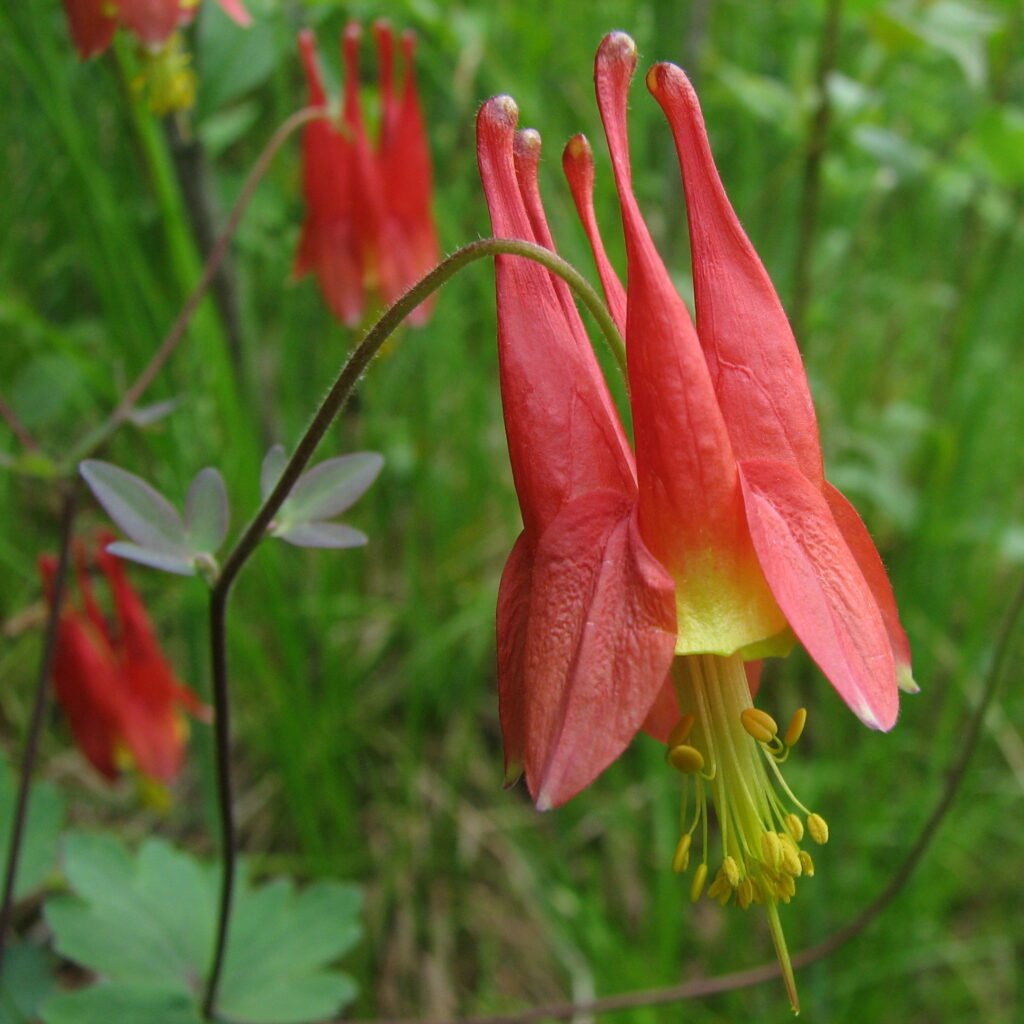
If you have a shady corner of your yard, Eastern Red Columbine is a gem. Its delicate red and yellow flowers dangle like little lanterns in spring, adding charm to spots where other plants struggle. It has a natural woodland feel that instantly softens shaded landscapes.
I love pairing Columbine with ferns or hostas for layered texture. It reseeds gently, popping up in new places without becoming unruly, which makes the garden feel more natural and spontaneous. Its airy structure also ensures it doesn’t crowd out nearby plants.
What’s more, Columbine requires almost no fussing over. Once established, it’s drought tolerant and happy to do its thing season after season. Even after the flowers fade, the interesting foliage provides greenery throughout the summer.
3. Frame Walkways with Black-Eyed Susan (Rudbeckia hirta)
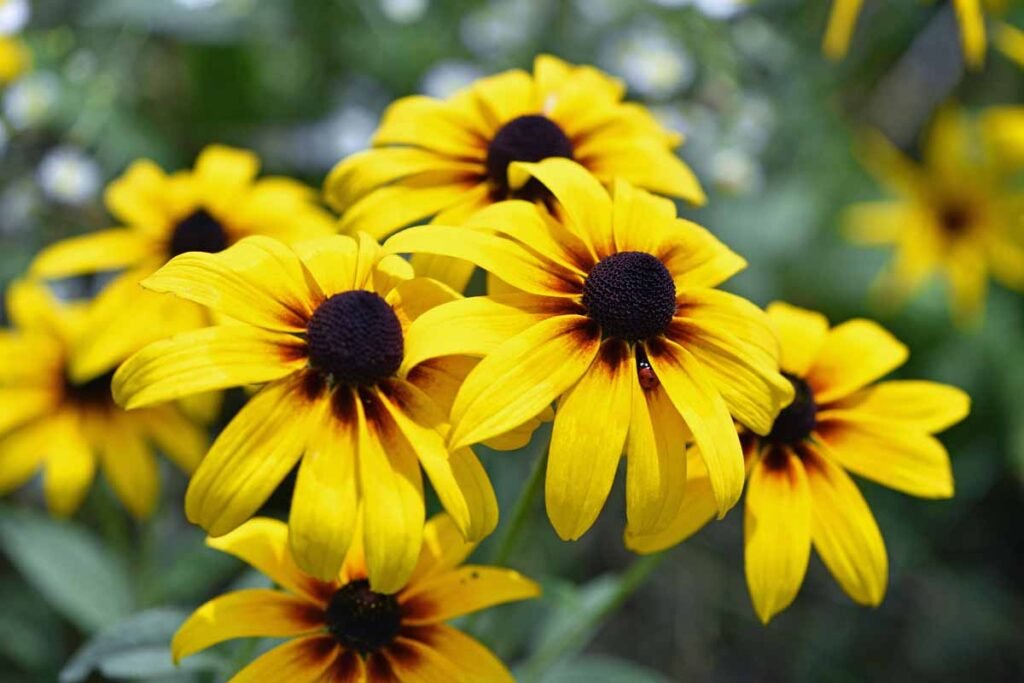
Few plants brighten a garden path like Black-Eyed Susans. Their sunny yellow petals with dark centers bring instant cheer and a wildflower feel that feels both casual and welcoming. Lining a walkway with these perennials makes every step feel like a stroll through sunshine.
These flowers are incredibly resilient—they handle heat, tolerate dry spells, and don’t demand rich soil. Once planted, they flourish with little more than occasional watering in the driest weeks. Their bloom period stretches from midsummer into fall, providing weeks of color.
For the best effect, plant them in clusters along your walkway or driveway edges. They pair beautifully with grasses and other natives, creating a low-maintenance border that feels polished but still natural. Birds also enjoy their seed heads in the fall, so leave a few standing after the blooms fade.
4. Introduce Groundcover with Wild Ginger (Asarum canadense)
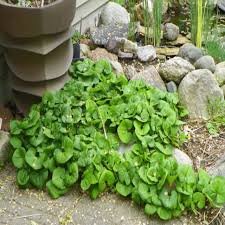
Groundcovers can be tricky—you want something attractive, hardy, and not invasive. Wild Ginger ticks all those boxes. With its heart-shaped leaves and low, spreading growth, it forms a lush carpet in shaded areas where grass won’t grow.
I’ve used Wild Ginger under trees, and it creates an elegant green base that makes the entire area feel intentional. The leaves are big enough to suppress weeds, and they keep their fresh look throughout the season. Although the flowers are hidden under the foliage, they add a secret charm if you kneel down for a closer look.
The best part? It asks for so little. Give it moist soil and shade, and it rewards you by steadily filling in spaces. Unlike many groundcovers, it stays in check and doesn’t overrun neighboring plants.
5. Plant Seasonal Interest with Joe-Pye Weed (Eutrochium purpureum)

If you’re looking to add height and drama, Joe-Pye Weed is your answer. This towering perennial can reach six feet or more, topped with airy clusters of soft pink blooms in late summer. It’s one of those plants that instantly gives your garden a natural meadow vibe.
Place Joe-Pye Weed at the back of borders or in a rain garden—it thrives in moist soil and full sun to part shade. Its sheer size makes it a great backdrop for shorter natives like coneflowers or asters. The effect is both grand and relaxed, as if your yard has been part of the landscape forever.
Aside from its beauty, Joe-Pye Weed is a butterfly magnet, especially for swallowtails. It also requires little care once rooted. Trim it down in late fall, and it’s ready to come back strong in spring.
6. Naturalize a Corner with Highbush Blueberry (Vaccinium corymbosum)
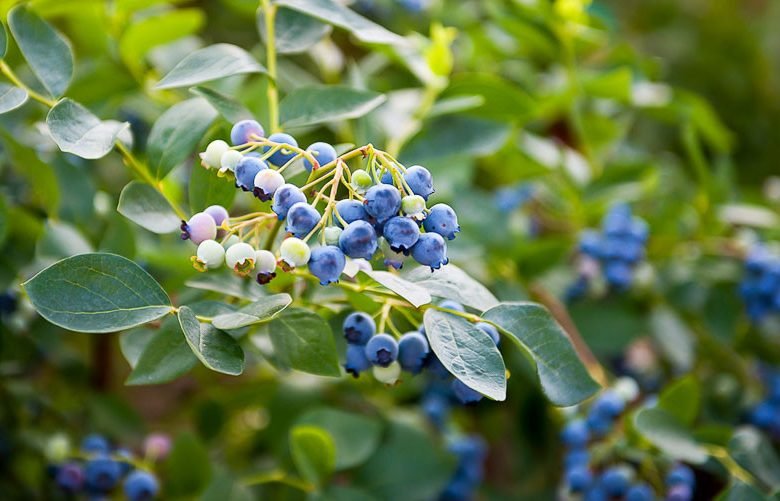
Highbush Blueberries are the ultimate multitaskers in a landscape. They give you delicate spring blossoms, juicy summer berries, fiery red fall foliage, and subtle winter structure. Planting them in a corner or as part of a hedge provides four seasons of beauty.
I’ve always admired how seamlessly blueberry bushes blend ornamental appeal with practicality. In summer, the berries feed both you and the local bird population. By fall, their leaves rival the brightest maples in the neighborhood.
They thrive in acidic, well-drained soil, and once established, they’re surprisingly low maintenance. With just a little pruning each year, they stay productive and attractive for decades.
7. Create Privacy with Eastern Red Cedar (Juniperus virginiana)
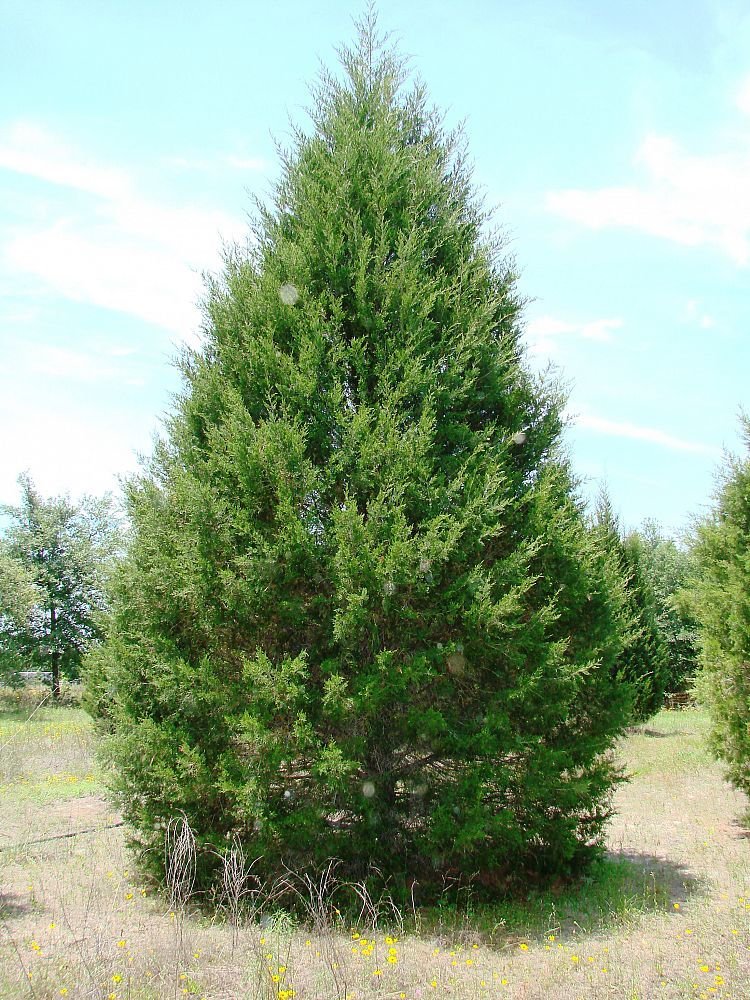
Sometimes you need privacy without resorting to a fence. Eastern Red Cedar is a native evergreen that provides year-round screening with dense, feathery foliage. It grows quickly and can adapt to a wide range of soil conditions.
I’ve seen it used effectively as a natural windbreak along property lines. The blue-toned berries also attract birds, adding movement and life to what might otherwise be a simple green wall. Its upright form makes it suitable for smaller yards too.
Maintenance is nearly nonexistent. Once planted, it stands strong through storms, drought, and cold winters. It’s a classic example of a plant that works hard for both you and local wildlife.
8. Brighten Wet Spots with Swamp Milkweed (Asclepias incarnata)
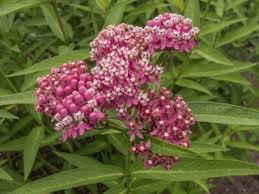
Swamp Milkweed is a lifesaver if you have damp areas in your yard. With tall stems and clusters of fragrant pink flowers, it thrives where other plants sulk. It’s also an essential host plant for Monarch butterflies, making it a must-have for pollinator gardens.
I like planting it along the edge of rain gardens where it soaks up excess water while adding beauty. Its flowers bloom through summer, and the seed pods that follow have a sculptural quality that lasts into fall.
It’s also surprisingly adaptable, handling average garden soil if it stays consistently moist. Once established, it needs very little care beyond occasional cutting back.
9. Add Elegance with New England Aster (Symphyotrichum novae-angliae)

As summer fades, many gardens lose their punch. That’s where New England Aster shines. Its rich purple or pink blooms arrive in late summer and last into fall, keeping the garden colorful when most perennials are winding down.
I’ve paired asters with ornamental grasses for a combination that dances in the autumn breeze. They also mix beautifully with goldenrod, creating a natural palette of purples and golds. The effect is both bold and graceful.
New England Asters like full sun and well-drained soil. Cutting them back in early summer keeps them compact and bushy, and they’ll reward you with masses of blooms later on.
10. Accent Beds with Wild Bergamot (Monarda fistulosa)
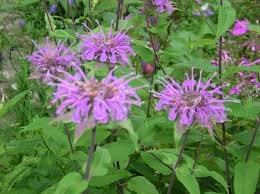
Wild Bergamot is the softer, lavender-hued cousin of Bee Balm. Its tufted flowers have a slightly wild, untamed look that works beautifully in natural-style gardens. Plus, its minty fragrance makes it a joy to brush past.
This plant thrives in sunny beds and pairs wonderfully with grasses or other wildflowers. I love using it as a middle layer in a perennial border—it fills the space without feeling heavy or overwhelming. Its long bloom period ensures steady color through summer.
It’s also a pollinator powerhouse, attracting bees, butterflies, and hummingbirds. Once it’s settled in, Wild Bergamot asks for little more than occasional watering in drought and a trim in fall.
11. Build a Natural Hedge with Witch Hazel (Hamamelis virginiana)
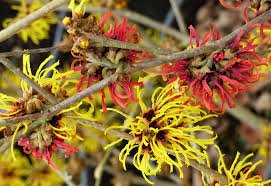
Witch Hazel is one of the most intriguing native shrubs. Just when you think the garden season is over, its yellow, ribbon-like flowers appear in late fall. It offers beauty when nearly everything else has gone quiet.
I love planting Witch Hazel as part of a mixed hedge—it adds structure year-round and seasonal surprises. Its fall blooms are complemented by vibrant foliage, and in winter, the sculptural branching adds interest even without leaves.
It’s easy to grow in part shade to full sun, and once established, it’s low maintenance. Witch Hazel shows that native plants don’t just support wildlife—they also add unique beauty to your landscape.
Wrap Up
Landscaping with native plants in the Northeast is less about forcing a design and more about letting the landscape express itself. Each of these plants offers beauty, resilience, and ecological value, creating a yard that feels alive with every season.
By mixing perennials, shrubs, and trees thoughtfully, you can build a garden that’s not only stunning but also sustainable. Start with one plant or one border, and watch how quickly your yard transforms into a place where nature and design meet seamlessly.

